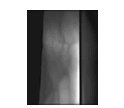Biometric authentication
Biometric authentication refers to the identification of humans by their physical traits. Fingerprint authentication and face recognition are commonly used. The finger vein authentication technology, however, has recently received much attention as a new method for biometric authentication because the authentication accuracy is high compared to other forms of biometric technologies. Some financial institutions have adopted this method as the newest security technology for personal authentication in ATMs.
Comparison of biometric modalities
A comparative evaluation of the major biometric modalities is described in Table 1. Each modality has its own advantages and disadvantages. For example, fingerprint is the least expensive method and is commonly used for identifying suspected criminals. However, the age and occupation of a person may cause some difficulties in capturing a complete and accurate fingerprint image. Fingerprints are also relatively easy to be copied, so that usage may be restricted when used for security purposes.
Finger vein recognition

Finger vein recognition is a method that specifies an individual using the vein pattern inside one’s fingers.
Since deoxyhemoglobin in the blood absorbs near-infrared lights, vein patterns appear as a series of dark lines. The near-infrared lights combined with a special camera capture an image of the finger vein patterns. The image is then converted into pattern data and stored as a template of a person’s biometric authentication data. During authentication, the finger vein image is captured and compared against the stored template of the user.
The features of finger vein recognition are as follows:
- Finger vein patterns are unique to each individual, even among identical twins. The false acceptance rate is very low (close to zero).
- Placing a hand or finger is less intrusive compared to other biometric technologies.
- Because veins are located inside the body, it is extremely difficult to read or steal. There is little risk of forgery or theft.
- Finger veins do not leave any trace during the authentication process and so cannot be duplicated.
- Finger vein patterns remain relatively constant through the adult years so that re-enrollment of the vein pattern will not be required once enrolled.
- Finger veins are less likely to be influenced by changes in the weather or physical condition of the individual.
- Rushes, cracked and rough skin do not affect the result of authentication.

